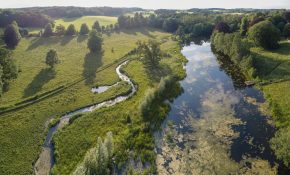Safeguarding our native white-clawed crayfish
Wednesday October 24th, 2018
Along with two employees from the Environment Agency and a couple of volunteers, we completed the translocation of over 60 native white-clawed crayfish (Austropotamobius pallipes) from the River Tud to a confidential ‘Ark site’ – an isolated refuge area where populations of native crayfish can become established away from threats.
This action was necessary as larger, non-native American signal crayfish are now present in many of Norfolk’s watercourses, including the Tud. Signal crayfish can out-compete our native crayfish for food and other habitat resources. Furthermore, they are a vector for crayfish plague, a lethal virus which white-clawed crayfish have no defence against.


Translocation
After ensuring that the correct paperwork, authorisations and licences were in place for the handling and moving of crayfish, we began the process. Crayfish like to seek shelter on the river bed or in the banks. Therefore, catching this species required a careful search beneath stones on the river bed and using a net to check amongst underwater vegetation and tree roots.
After much patience, over 60 native crayfish were caught. These were closely inspected to ascertain their size and sex, as well as to check for any signs of disease or damage. Sadly, three or four of the crayfish had to be returned to the river due to disease – it is essential that we minimise any threat to the new Ark site.
Subsequently, the crayfish were moved to their new site, where they were recorded and monitored once more, before being released in groups.
A gentle reminder
At present, there is no known method for the effective control of non-native crayfish. Please remember that it is illegal to trap these species, and it is vital that any equipment which comes into contact with a river should be disinfected and allowed to completely dry out to prevent the spread of the crayfish plague.
“The largest white-clawed crayfish are up to three inches long. With their eight legs, they can walk forward in a rather clumsy way with their two equal claws held out in front of them. They also have a rather cute tail that they can spread and, using their strong tails, can swim forward at about the same speed. Their top speed, however, seemed to be in reverse, probably a clever ploy to escape from predators” – Our wonderful volunteer Andrew, a member of ‘Friends of the River Tud’, who supported us with so much enthusiasm and passion.





